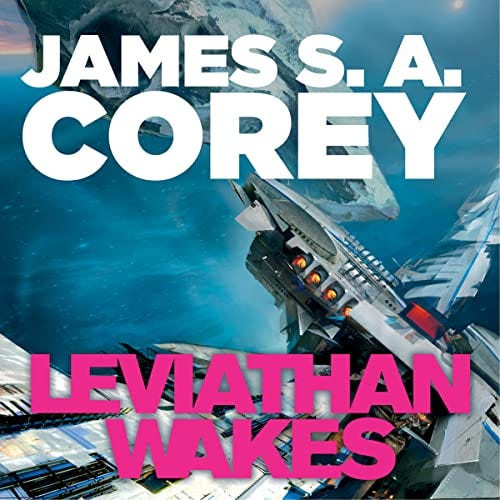#106: Leviathan Wakes by James S.A. Corey
Source Material, Volume 11 - Book 1 of The Expanse
Happy Friday, Readers!
Woo boy this series! I’m high on it right now!
In today’s edition of Source Material, I want to talk about the genesis of The Expanse story and how James S.A. Corey (pseudonym for Ty Franck and Daniel Abraham) collaborated. Then I’ll call out what I like about the book, what I like about the first season of the show, and a change that’s making me feel blue. Let’s go!


The Genesis of The Expanse
Ty Franck initially developed the world of The Expanse for a massive multiplayer online role-playing game (MMO RPG).1 He researched what a colonized solar system could be like and thought about the conflicts that would arise between factions of Earth, Mars, and the outer planets. He took detailed notes and kept them in a large binder.
Daniel Abraham was a friend who found out about the binder that contained all the rich detail and world building and said: Let’s write a novel! Abraham recognized the heavy lifting had already been done.
On Leviathan Wakes, they split the two main character point of views between them: Franck wrote the initial pass of the Holden chapters and Abraham the Miller chapters. They edited and rewrote each other’s work to the point that neither can remember who is responsible for a given passage.
The Book
Four elements worked really well for me in the book.
Characters: This is one of the most important elements and Leviathan Wakes nails it. James Holden and his crew are fun to be around. Miller’s moral code differs from Holden’s in ways that create tension and conflict that kept me engaged.
Vibe: The story ventures into dark territory without becoming bleak. None of the factions are getting along. People commit murder by throwing someone in an airlock and “spacing” them. In some ways it feels like a western. In spite of this, the authors manage to strike a hopeful tone and have plenty of levity.
Surprises: There are some jaw-dropping doozies. It’s always fun to be surprised and the twists felt genuine and earned.
Science: Franck said in an interview that inertia and light delay were two aspects of physics that had to exist in this world. Both introduce complications that make the story interesting.2
The Show
Characters: Since I read the books first, it was impossible not to bring everything I know and love about the characters to the show-watching experience. Thomas Jane is perfectly realized as Miller and I dug everything he was doing. Wes Chatham as Amos and Dominique Tipper as Naomi are chef’s-kiss wonderful. I could tell they knew their characters and I was delighted to hear that Chatham was a book fan long before he got invited to audition for a part. Cas Anvar did great work too, but his casting is unfortunate for other reasons that must be mentioned.3
Visual Effects: At first these bothered me and felt very “SyFy channel” but I got off my high horse and learned to appreciate them.
Story: The show hits every major story beat and takes its time putting down important groundwork. The two points of view operating independently and then converging was just as fun and exciting as it was in the book.
The Difference(s)
I have one gripe and I’m just going to get it off my chest and never mention it again: Steven Strait as Holden. He doesn’t quite measure up to what I had in my head. I’m not sure any actor could, so I don’t fault him for having an impossible task. I hope he’ll grow on me, but I’m not sure I can ever see past this tiny detail:
An Earther, maybe in his early thirties. Pale skin, blue eyes, dark short-cropped hair. (emphasis mine)
This has been fun! Let’s do it again next month with Season 2 and Caliban’s War!
Until next time, happy reading to you all!
Kyle
We all know that warp speed in Star Wars is a joke — I point it out to my kids every time that accelerating or decelerating that fast would turn your body to mush.





❤️❤️❤️
The crossover between video games and literature keeps happening more and more. The Last of Us. Tomorrow and Tomorrow and Tomorrow. This series at least started as a video game and then became novels. It’s interesting to see how something that was once niche is weaving in with these other art forms. It’s good stuff.